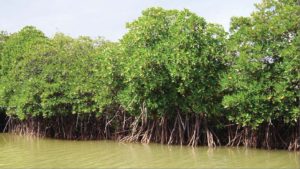
A Bangladeshi government decision to allow a gas plant to be built near the Sundarbans mangrove forest has sparked anger and opposition from environmental activists.
Energypac applied for permission to set up the liquefied petroleum gas (LPG) plant in 2012 and received a primary nod the same year. The final approval from Energy Division came on Jan. 14, 2018. The gas plant will process natural gas and convert into LPG for sales in the market for domestic consumption — households, hotels, restaurants and industrial establishments. The plant is under construction and is expected to enter the market for sales this year. The plant will have 3,000 metric tonnes of gas storage capacity a month and will be extended to 5,000 metric tonnes gradually.
The company has also set up a factory that can produce 100,000 12kg cylinders for LPG per month. The company wants to come to market this year with 500,000 cylinders and it has also started setting up 300 LPG stations/distribution points across the country.
Activists fear the LPG plant, which is within 11 kilometers of the forest, will cause irreparable damage to its wildlife and biodiversity. Among their concerns is how ships carrying toxic fuels to and from the plant would pollute rivers that run through the forest.
The Sundarbans — a UNESCO World Heritage Site and a protected wetland under the Ramsar convention — is already under threat from two under-construction coal plants being built within 14 kilometers of the forest.
“By allowing these power plants, the government has encouraged industries to set up factories around the Sundarbans, and now a gas plant will trigger another influx of industries,” Mondal told ucanews.com.
“If this continues, the Sundarbans won’t survive and without the Sundarbans ecological balance would be destroyed and large parts of the southern coast of Bangladesh would submerge under seawater.”
The Sundarbans is spread between Bangladesh and India, but the largest portion lies in Bangladesh. It provides livelihoods for up to one million people in surrounding areas and it acts as a natural shield for 40 million people who are vulnerable to natural disasters such as cyclones in Bangladesh’s coastal region.
In recent times, the forest has been under pressure from air and water pollution resulting from the encroachment of housing and industries.
Sharif Jamil, joint secretary of environmental group Bangladesh Poribesh Anolon condemned the government’s actions.
“The forest is already showing signs of destruction — the riverbed is heavily silted, river erosion is intensifying and rare species of birds and animals disappearing,” Jamil said.
“Sundarbans is approaching to a slow death and with it the coastal region will die too,” he said.
“The power plants and proposed gas plants would slowly destroy Sundarbans, our natural shield and asset.”
The building of the coal-powered plants triggered a series of unsuccessful protests in recent years. There have also been accusations that environmental rules were flouted to allow construction to take place.
